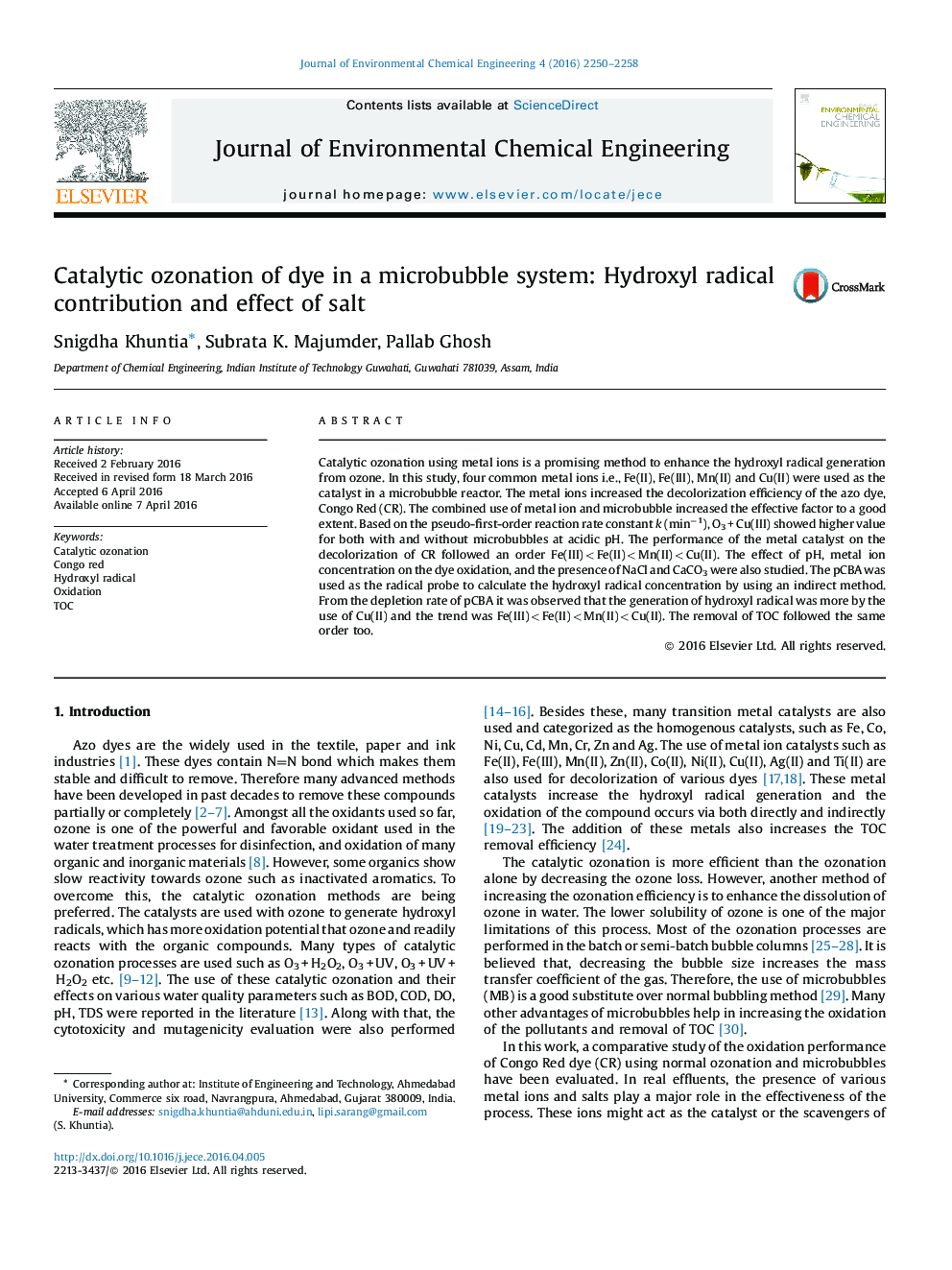| Article ID | Journal | Published Year | Pages | File Type |
|---|---|---|---|---|
| 221710 | Journal of Environmental Chemical Engineering | 2016 | 9 Pages |
•The use of metal catalysts increased the dye decolorization.•The microbubbles enhanced the effectiveness factor.•The use of Cu(II) and Mn(II) was more effective than Fe(II) and Fe(III).•The catalysts increased the hydroxyl radical generation from ozone except Fe(III).•The use of metal ions increased the removal of TOC.
Catalytic ozonation using metal ions is a promising method to enhance the hydroxyl radical generation from ozone. In this study, four common metal ions i.e., Fe(II), Fe(III), Mn(II) and Cu(II) were used as the catalyst in a microbubble reactor. The metal ions increased the decolorization efficiency of the azo dye, Congo Red (CR). The combined use of metal ion and microbubble increased the effective factor to a good extent. Based on the pseudo-first-order reaction rate constant k (min−1), O3 + Cu(III) showed higher value for both with and without microbubbles at acidic pH. The performance of the metal catalyst on the decolorization of CR followed an order Fe(III) < Fe(II) < Mn(II) < Cu(II). The effect of pH, metal ion concentration on the dye oxidation, and the presence of NaCl and CaCO3 were also studied. The pCBA was used as the radical probe to calculate the hydroxyl radical concentration by using an indirect method. From the depletion rate of pCBA it was observed that the generation of hydroxyl radical was more by the use of Cu(II) and the trend was Fe(III) < Fe(II) < Mn(II) < Cu(II). The removal of TOC followed the same order too.
Graphical abstractFigure optionsDownload full-size imageDownload as PowerPoint slide
